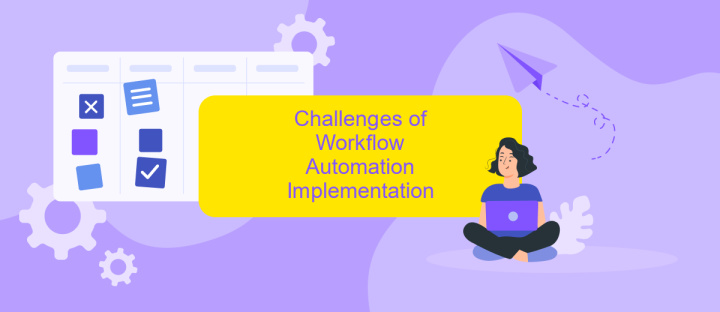Enterprise Workflow Automation
In today's fast-paced business environment, enterprise workflow automation has become a critical tool for enhancing efficiency and productivity. By automating repetitive tasks and streamlining complex processes, companies can reduce errors, save time, and allocate resources more effectively. This article explores the key benefits, challenges, and best practices for implementing workflow automation in your organization.
Overview of Enterprise Workflow Automation
Enterprise Workflow Automation is a transformative approach that enables organizations to streamline and optimize their business processes. By automating repetitive tasks and integrating various systems, companies can achieve higher efficiency, reduce human error, and improve overall productivity.
- Enhanced efficiency through automation of repetitive tasks
- Reduction of human error and operational risks
- Improved productivity and resource allocation
- Seamless integration of various business systems
One of the key aspects of successful workflow automation is the integration of different software and services. Tools like ApiX-Drive facilitate this by allowing businesses to connect multiple applications without the need for coding. This ensures that data flows smoothly between systems, enabling real-time updates and more informed decision-making. By leveraging such tools, enterprises can significantly enhance their workflow automation strategies.
Benefits of Workflow Automation

Implementing workflow automation in enterprises can significantly enhance efficiency by streamlining repetitive tasks and minimizing the potential for human error. Automated workflows ensure that tasks are completed consistently and on time, which helps in maintaining a high level of productivity. Moreover, it allows employees to focus on more strategic activities, thereby fostering innovation and improving job satisfaction.
Another key benefit is the ease of integration with various software and tools, which is crucial for seamless operations. Services like ApiX-Drive facilitate these integrations by connecting different applications and automating data transfer between them. This not only reduces the time spent on manual data entry but also ensures data accuracy across platforms. Ultimately, workflow automation leads to better resource management, cost savings, and enhanced operational agility, making it an invaluable asset for modern enterprises.
Challenges of Workflow Automation Implementation

Implementing workflow automation in an enterprise setting can present several challenges that organizations need to address to ensure a smooth transition. These challenges often stem from the complexity of existing processes, the need for integration with various systems, and the resistance to change from employees.
- Complexity of Existing Processes: Many enterprises have intricate workflows that have evolved over time. Mapping these processes accurately and automating them can be a daunting task.
- Integration with Existing Systems: Workflow automation requires seamless integration with existing software and tools. Services like ApiX-Drive can significantly ease this process by providing a platform for smooth and efficient integrations.
- Employee Resistance: Introducing automation can lead to resistance from employees who are accustomed to manual processes. Effective change management strategies are essential to mitigate this resistance.
Addressing these challenges requires a strategic approach that includes thorough planning, leveraging integration tools like ApiX-Drive, and fostering a culture of adaptability among employees. By doing so, enterprises can successfully implement workflow automation and reap its numerous benefits.
Best Practices for Successful Workflow Automation

Implementing workflow automation in an enterprise setting requires careful planning and execution. Begin by clearly defining the objectives and outcomes you aim to achieve with automation. This will help in selecting the right tools and setting realistic expectations.
Next, ensure that all stakeholders are on board and understand the benefits of workflow automation. Effective communication and training are essential for smooth adoption and minimizing resistance to change.
- Start with automating simple, repetitive tasks to demonstrate quick wins.
- Choose scalable tools that can grow with your business needs.
- Regularly monitor and evaluate the performance of automated workflows.
- Ensure data security and compliance with relevant regulations.
- Utilize integration services like ApiX-Drive to streamline data flow between different systems.
Finally, always be prepared to iterate and improve your workflows. Automation is not a one-time setup but an ongoing process that requires regular updates and optimizations to adapt to changing business environments and technologies.
Future Trends in Workflow Automation
The future of workflow automation is poised to be shaped by advancements in artificial intelligence and machine learning. These technologies are expected to enable more intelligent and adaptive workflows, capable of learning from past actions and making real-time adjustments. This will lead to increased efficiency and accuracy, as systems can predict and respond to potential issues before they arise. Additionally, the integration of AI-driven analytics will provide deeper insights into workflow performance, helping organizations to continuously optimize their processes.
Another significant trend is the growing importance of seamless integration between various software and platforms. Services like ApiX-Drive are at the forefront of this movement, offering tools that simplify the process of connecting disparate systems. This ensures that data flows smoothly across different applications, reducing manual intervention and the risk of errors. As businesses strive for greater agility, the ability to quickly and easily integrate new tools and technologies will be crucial in maintaining a competitive edge.
- Automate the work of an online store or landing
- Empower through integration
- Don't spend money on programmers and integrators
- Save time by automating routine tasks
FAQ
What is Enterprise Workflow Automation?
How can Enterprise Workflow Automation benefit my business?
What types of processes can be automated?
How do I get started with Enterprise Workflow Automation?
Is it difficult to implement workflow automation?
Time is the most valuable resource for business today. Almost half of it is wasted on routine tasks. Your employees are constantly forced to perform monotonous tasks that are difficult to classify as important and specialized. You can leave everything as it is by hiring additional employees, or you can automate most of the business processes using the ApiX-Drive online connector to get rid of unnecessary time and money expenses once and for all. The choice is yours!


